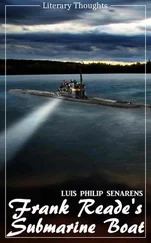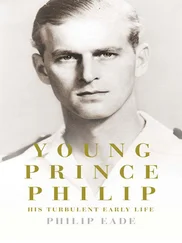The state’s policy of demanding native tribute provoked resistance and retaliation as well as compliance. Distance from Moscow encouraged some officials to collect more than was due and pocket the difference, to demand bribes, to sell justice, and to take natives as household slaves. But the natives sometimes retaliated. In 1634 Buriat tribesmen burned down Fort Bratsk, and ten years later, angered by the Russians, they mustered over 2,000 warriors to massacre them in their scattered settlements. The government understood at an early stage that ill-treatment of natives could lead to costly campaigns of pacification. As a result, it introduced a policy that took account of native fears and past experience. In 1644, for example, the governor of Irkutsk was told that
The Sovereign Tsar… has ordered that [tribute-paying native people] always be treated with consideration, that they suffer no violence, losses, extortions or impositions, and that… they should live in peace without fear, pursuing their occupations, and serve the Sovereign Tsar… and wish him well… Servicemen are ordered to bring men of newly-discovered lands who do not yet pay tribute under the exalted arm of the Sovereign Tsar, but in a kindly, not a violent manner.
Furthermore, a governor receiving such an order was to announce the policy with formal ceremony to representatives of the natives concerned. Enforcement was sometimes difficult, but the government did take steps to enforce the rule and punish oppressive agents and officials.
Prejudice was confined to religion, but conversion was strictly a voluntary matter. Tributary people were to be baptized only ‘after careful investigation to determine that they wish it of their own free will’. 15Once baptized, however, a native was regarded as acceptable even to enter the tsar’s service. Unlike most other colonizing peoples, the Russians were free of anti-native prejudices.
Two portraits of seventeenth-century Russian tsars reflect a massive change in vision and attitude that took place within a few decades. The first is of Michael, the first Romanov tsar, who was depicted in formal, almost symbolic, style as a passive, callow youth, albeit with crown and sceptre — a potential ‘sufferer for Christ’s sake’. The second, by a Dutch artist, portrays his son and successor, Alexis, realistically as a majestic and vigorous man of this world. The contrast is partially explained by caution. The new dynasty was vulnerable under Michael in the 1620s and ‘30s. It was therefore careful, acting well within the confines of tradition. By the 1660s, however, the dynasty was more strongly established. True, Alexis took care to claim descent from Ivan IV and, through him, the Roman emperors, but this was as much to justify an imperial role as to reinforce his legitimacy as a ruler. Although Alexis played the pious tsar as assiduously as Michael had done, in his reign Russia began to taste success again after a long interval. And, as confidence returned, the regime became more outward-looking, more open to the modern world.
Russia’s first attempt, under Michael, to regain lost ground in the west proved premature. A two-year war with Poland ended in ignominious defeat in 1634. An even more shaming moment came a few years later. In 1637 the Cossacks of the Don stormed the Turkish citadel of Azov. Thanks to material aid from Moscow, they held it until 1641, when, after being bombarded by over a hundred heavy guns which the Turks had brought up to help them retake the place, they asked the Tsar to take it over. But this would have meant war with the Sultan. Could Russia afford it? The question was put to an Assembly of the Land. The answer, in effect, was ‘No’. The chance of a break-through to the Black Sea was rejected.
At that juncture the security of the Volga—Caspian route was a greater priority. Robber bands up to 3,000 strong infested the lower reaches, and the Dagestan coast of the Caspian was the base of some of the most notorious robbers in the world in the 1630s. 16A strong garrison had to be maintained at Astrakhan in order to protect the trade with Persia and beyond, and even then the city was occupied by robber Cossacks for a time in the later 1660s. The chief impediment to expansion in the south and west was no longer economic or demographic but lack of up-to-date military expertise and technology. It had long been Russian practice to engage foreign military advisers on an individual basis, but now, following the general European practice of the time, Moscow began to engage entire units of professional soldiers on the open market, and to use entrepreneurs to provide whatever military services and expertise it needed.
The Muscovite equivalent of the Habsburg Emperor’s Wallenstein was a Scottish soldier of fortune, Alexander Leslie. Leslie’s speciality, modern siege warfare, was particularly relevant now that Russia’s military efforts had to be focused against Europeans and the Ottoman Turks rather than against Tatars. Expertise in steppe warfare was not enough to win wars on other fronts. The siege of Smolensk, at which Leslie served, demonstrated that. Well-drilled infantry units and improved artillery were the new priorities. At the beginning of the 1630s Leslie had been sent to western Europe to help raise ten infantry regiments trained on the Dutch and German model. 17They fought in the Smolensk campaign, but were disbanded once it was over because of the expense. It was only under Alexis (r. 1645—76) that there was a sustained effort to modernize the army’s weaponry and training.
One of the first signs was the publication by the state press in Moscow in the summer of 1647 of a translation into Russian of The Art of Infantry Warfare, by Johann von Wallhausen. The book was generously illustrated with engravings of the tactics and drill described in the text, 18which embodied the best European military practice. Its appearance suggests that the government intended to instruct Russian officers in how to modernize at least parts of its army. But when Russia next went to war with Poland, in 1654, the practice of engaging foreign troops was revived.
The scene is a tavern near the market place of Riga seven years later. Three Scots mercenary officers — Alexander Daniels, Walter Ert and Patrick Gordon — are sitting at a table, sharing a flagon of wine and discussing their employment prospects. Gordon, who recorded the scene, has quit the King of Poland’s service. He has been contemplating a move to the service of the Habsburg Emperor, who might be engaging people for war against the Turks, but is also toying with the idea of Russia. His companions have served in the King of Sweden’s army, but the King has run out of money and they have been paid off. The focus of the conversation moves to Russia. The Tsar is in the seventh year of a war with Poland, and they have heard that his agents are recruiting experienced officers like them. The pay is not much, but at least it is paid reasonably promptly, people say. Besides, there are good prospects of quick promotion to high rank in Russian service — and of good company to boot.
For Gordon the conversation was decisive. He signed up with Russia as a service officer, and his decision proved sound: he was to rise to the rank of general. 19Many others had preceded him, and, since this tsar made a practice of inviting foreigners he had engaged to special levees at the Kremlin or at his summer palace at Kolomenskoe, many of their names are recorded in the court diaries. In June 1657, for example, a colonel of dragoons called Junkmann was graciously received by His Imperial Majesty, along with lieutenant-colonels Skyger, Serwin, van Strobel and Trauernich and many other officers. In October 1661 (to cite one of several other examples) the Austrian Colonel Gottlieb von Schalk was received, along with the thirty-seven officers, NCOs and trumpeters he had engaged for the Tsar’s service, as was Colonel Henryk van Egerat, who had brought a contingent of 150 soldiers from Denmark. Most were sent to fight on the western front, but some went south to train the musketeer regiment at Astrakhan, 20and from then on the policy priority was to train Russian conscripts in the new way, in ‘regiments of new formation’ under Russian officers.
Читать дальше





![Stephan Orth - Behind Putin's Curtain - Friendships and Misadventures Inside Russia [aka Couchsurfing in Russia]](/books/415210/stephan-orth-behind-putin-s-curtain-friendships-a-thumb.webp)





